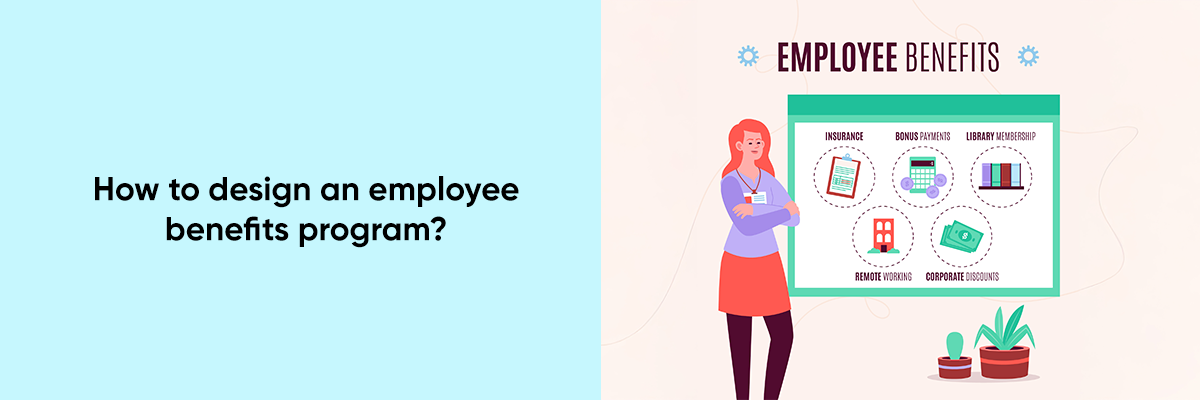It’s true that most employees work primarily for the salary they earn, but there are other benefits that play an equally important role in their job satisfaction and motivation. In this blog, we’ll explore some of these crucial non-monetary benefits and guide you, human resource professionals, on how to design an effective employee benefits program for your company, ensuring a more engaged and loyal workforce.
If you want to learn more about topics related to human resources, be sure to check out our HR webinar page, where you will find both on-demand and upcoming webinars on HR topics. These webinars can help you earn SHRM and HRCI credits, as well as provide valuable knowledge to boost your career and take it to the next level.



- Identify Current and Future Employee Needs
When designing an employee benefits program, it’s essential to understand both the current and future needs of your workforce. Employee benefits typically fall into categories such as health, retirement, time off, work-life balance, professional development, perks, and legal compliance. To get a clear picture of what your employees value, start by researching what similar companies in your industry—particularly competitors—are offering. This will give you a benchmark to ensure your offerings are competitive.
Additionally, use interviews with potential hires to gather insights into what fringe benefits are most attractive to top talent. Surveys can also be conducted with current employees to identify any gaps in your existing benefits program and understand what they would like to see added. Once you’ve gathered all this information, you’ll be well-equipped to create a benefits package that supports your employees and helps your company attract and retain top talent.
- Ensure Compliance with Legal Requirements
When creating an employee benefits program in the U.S., it’s crucial to include the benefits required by federal and state laws. Failure to comply with these regulations can lead to legal issues. While some benefits are mandatory, others are optional but may still need to be structured according to specific legal guidelines. Make sure your benefits package includes all legally required offerings and adheres to government regulations.
Here are some examples of mandatory and optional benefits in the U.S.:
- Health Insurance (Mandatory for companies with 50+ full-time employees under the Affordable Care Act)
- Dental Insurance (Optional)
- Vision Insurance (Optional)
- Mental Health Support (Optional but often included with health insurance plans)
- Pension Plans (Optional but governed by ERISA if offered)
- 401(k) or Similar Retirement Plans (Optional but governed by ERISA if offered)
- Paid Time Off (PTO) (Not federally mandated but required in some states or local jurisdictions)
- Sick Leave (Mandatory in some states and localities, like California and New York)
- Parental Leave (FMLA mandates unpaid leave for eligible employees, and some states require paid leave)
- Bonuses and Profit-Sharing (Optional)
- Stock Options/Equity (Optional)
- Life Insurance (Optional)
- Disability Insurance (Short-term disability is required in some states, such as California, New Jersey, and New York)
- Flexible Working Hours (Optional)
- Remote Work Options (Optional)
- Tuition Reimbursement/Education Assistance (Optional)
- Training and Development Programs (Optional)
- Commuter Benefits (Optional, but required in some cities like San Francisco and New York)
- Wellness Programs (Optional)
- Child Care Assistance (Optional)
- Workers’ Compensation (Mandatory in all states)
- Unemployment Insurance (Mandatory, employer-funded)
Ensuring compliance with U.S. legal requirements not only protects your business but also builds a foundation of trust with employees. Once you have included these mandatory benefits, you can enhance your program with optional benefits that reflect your company’s values and support employee well-being.
- Align Benefits with Organizational Budget and Goals
While you may want to offer a variety of benefits to your employees, it’s essential to consider your company’s current financial position and long-term goals. Not all benefits are suitable for every business, especially if you’re a growing startup or working within a limited budget.
For example, offering remote work options may not be the best choice for a new company that relies on in-person collaboration to drive growth and productivity. This is because remote work has certain challenges. Similarly, providing benefits that place a financial strain on the company, like unnecessary perks, could hinder your progress.
Instead, focus on offering benefits that enhance productivity and motivation without overstretching your budget. For instance, a sales bonus for exceptional performance can be a great way to encourage employees to achieve more while aligning with your company’s goals.
By carefully selecting benefits that match both your budget and organizational objectives, you’ll create a balanced program that supports employee satisfaction without compromising the health of your business.
- Select Benefits That Support Employee Retention
The information you’ve gathered on employee benefits will be invaluable at this stage, as you begin selecting or enhancing the benefits for your program. While mandatory benefits must be included, it’s important to choose additional perks that align with your industry and the nature of your employees’ work.
For example, if you operate in a high-risk environment such as a factory, benefits like life insurance, disability insurance, or accident coverage are essential. On the other hand, if your employees can perform their work remotely, offering the option to work from home can be a highly attractive benefit.
Tailor your benefits to suit the specific needs of your workforce, ensuring that the offerings are relevant, practical, and supportive of their well-being. By selecting benefits that resonate with your employees and fit the nature of your business, you’ll create a program that not only complies with legal requirements but also strengthens employee retention and satisfaction.
- Customize Benefits for Different Employee Groups
In any organization, employees perform different roles, and their benefit needs will vary accordingly. It’s important to recognize that a “one-size-fits-all” approach doesn’t work. Tailoring benefits to match the specific needs of different employee groups ensures that your program is more effective and relevant.
For instance, offering remote work options might not be suitable for all roles, like managerial positions where in-person leadership is crucial. However, providing equity options or other financial incentives may be more appropriate for these employees.
By customizing benefits to fit the diverse needs of your workforce, you can create an employee benefits program that’s both practical and highly valued, catering to each group’s unique requirements.
- Continuously Monitor and Improve the Program
After establishing your employee benefits program, it’s essential to continuously monitor its impact on your employees and their productivity. Regularly assess how well the program is working and whether it’s meeting the evolving needs of your workforce. Use this feedback to revisit the initial steps and make adjustments as needed, ensuring the program stays relevant and effective over time.
Conclusion
Designing an employee benefits program requires a balance between understanding employee needs, complying with legal requirements, and aligning benefits with your company’s budget and goals. By selecting benefits that support retention, customizing offerings for different employee groups, and continuously monitoring and improving the program, you’ll create a package that not only attracts top talent but also keeps your workforce engaged and motivated.
A well-crafted benefits program can significantly enhance job satisfaction, boost productivity, and ensure long-term loyalty, making it a key element in your company’s success.


